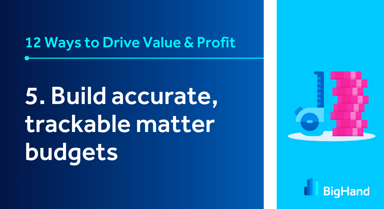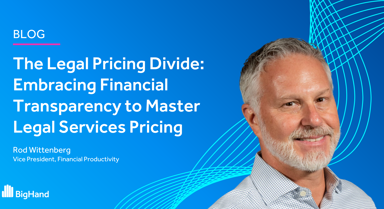I have spent a lot of time researching how other lawyers handle budgeting. In this post, I share some of the insights I learned from that research and explain the budget-making process from the litigator’s perspective.
Lawyers Budget Like It’s 1999. I wrote my first litigation budget in 1999. Since I was a second-year associate with no clue what I was doing, I asked my mentor for advice. His words of wisdom: write down everything you can think of and how long you think it will take, then double it.
Seventeen years later, not much has changed.
Every lawyer I know creates budgets in Word or Excel. Some firms have created elaborate Excel spreadsheet templates to help standardize the process, but most individual lawyers make up their own format and then repurpose the same spreadsheet or word document again and again. As a result, even budgets from the same firm will come in all sorts of different shapes and sizes.
Given the high-tech age we live in, you would think legal budgets would be based on sophisticated data analytics from past invoices. Nope. There are basically two methods lawyers today use to get budget numbers (described below), and neither of them are particularly scientific.
Method 1: Percentage of Time Model
Sometimes called the "burn rate" or "supply side" approach, this is the easiest and most pervasive budgeting method by far. The lawyer writing the budget (hereinafter, the “budget master”) decides who will work on the matter, approximately how long the matter will take, and the percentage of time each timekeeper will dedicate to it over time. For example, if the budget master expects that case will take about a year and a timekeeper will spend 50% of their available time on it, they will budget about 1100 hours for that person (assuming 2200 billable hours per year).
Once the budget master has the total number of hours for each timekeeper, those numbers get sliced and diced to fit into whatever format the lawyer likes or the client asked for — generally a spreadsheet with quarterly spending and/or the five phases of litigation set by the American Bar Association (Case Assessment, Pleadings, Discovery, Trial, Appeal).
Based on my anecdotal research, the percentage of time method can give you an impressive-looking budget, but the final numbers will be a LOT lower than the actual cost. Accuracy improves if the budget is for small chunks of time in the near future (e.g., the upcoming quarter) rather than a full matter.
Method 2: Task-Based Model
Some of the lawyers I spoke with told me they create task-based budgets. This means they define the tasks in the case (e.g., 10 depositions, 3 discovery motions, etc.) and estimate how much time each timekeeper will spend on each task.
Overall, I was most impressed with the budgeting prowess of the lawyers who systematically consider the tasks involved in matter. This is a more time-consuming process than just estimating the percentage of time per timekeeper, but these lawyers were less haunted by budget horror stories.
Clients Are In Control. On this all lawyers were unanimous: lawyers will provide whatever form of budget the client wants. This should not be surprising; after all, the amount of time and money law firms will spend to win business is staggering. So, clients, if you want to get more detail in your budget, all you have to do is ask for it.
BigHand Matter Pricing software incorporates the best of both models by combining a detailed, task-based budget structure with timekeeper summaries. We provide sample budgets and numerous copy and customized features to speed up the process and provide guidance on the cost metrics.






